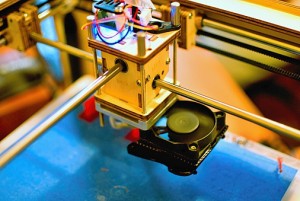Lose Weight > Common Sense To Lose Weight > Common Sense Article > Sugar High: Diabetes The Killer Disease
Sugar High: Diabetes The Killer Disease
Lately, you pee a lot. You always feel thirsty and you always feel hungry. You always feel tired. Your vision blurs most of the time. Your wounds heal longer that it used to. If these things are happening to you, now is the time to worry. You might have diabetes.
Diabetes is a disease characterized by high level of blood sugar. This is due to faulty insulin production, insulin action, or both. Diabetes can lead to serious complications then eventually to premature death if not controlled correctly. So to better prevent diabetes or treat it if you already have diabetes, equip yourself with the ins and outs of the sickness.
There are two types of diabetes, Type 1 and Type 2. In both types, early detection and early treatment will reduce the chances of developing serious health problems.
Type 1 diabetes was formerly known as juvenile diabetes or insulin dependent diabetes mellitus. Type 1 diabetes matures quickly and symptoms are very visible. This type of diabetes occurs when the body’s immune system destroys pancreatic cells. These cells are the insulin producing cells. This type of diabetes affects mostly children and young adults. Risk factors for type 1 diabetes include autoimmune, genetics, and environmental factors.
The exact cause of this form of diabetes is still unknown but it is believed that this is triggered by a virus or an allergen which stimulates the immune system of the baby, kid or young adult to attack the beta cells in the pancreas.
Type 1 diabetes symptoms include fatigue, recurrent urination, thirst, weight loss, sweet smelling breath and difficulty in breathing. If type 1 diabetes is left undiagnosed and untreated, this will lead to labored breathing, coma, and death.
Type 2 diabetes was used to be called non-insulin-dependent diabetes mellitus (NIDDM) or adult-onset diabetes. This form of diabetes develops slowly and the symptoms are usually less severe than people with type 1 diabetes. Type 2 diabetes begins as insulin resistance. Insulin resistance is a disorder in which the cells do not use insulin properly. As the need for insulin rises, the pancreas loses its ability to produce insulin.
Recent studies have shown that genetics, fetal history, obesity, lack of physical activity, diet high in fat, and stress may influence in the development of this form of diabetes. Also, genetic studies have shown that association of some genes is in fact the cause of Type 2 diabetes.
Now on to the most important question – is it treatable?
There is still no cure for diabetes but it can be managed. Some of the ways to manage diabetes is through injection of insulin in the body, careful meal planning, blood glucose monitoring, and exercise.
There are some recent medical breakthroughs that may help in the curing of diabetes. One is the transplantation of beta cells (the insulin producing cells) which has been successful although with some side effects. Another treatment is the pancreas transplantation. This is not recommended treatment for diabetes unless there is a need for a kidney transplant as well. Another approach is the genetic manipulation although this is still under study. In this particular treatment, insulin genes are inserted to cells that are not producing insulin to make them produce insulin.
Related Articles
-
29 Food Rules We Can Learn From The French
In France, time-tested food wisdom, health and pleasure will nev
-
Approaches To Help You Lose That Unwanted Belly Fat
Theres lots of people throughout the wor
-
Foolproof Ways To Avoid Weight Gain
-
Weight Loss Techniques - Why Skipping Meals Is Bad For Weight Loss
It has been proven through researches and studies that starvation is n
-
Surgery for the Obese - Desperate Measures
The figures are in. The number of overwe
-
Advantages Of Metabolic Resistance Training Over Traditional Cardio
Steady state cardio meaning running on a treadmill for 45 minutes at n
- DON'T MISS
- Eat Clean For Weight Loss
- Close Kept Secrets To Weight Loss Lesson 26
- Details about How you can Drop Belly Fat
- Ways To Maintain A Healthy Lifestyle
- Limits to exercise benefits found when it comes to losing weight
- Environmental Hypocrisy On The Right
- Are You Using A Shortcut To Weight Loss
- Hoodia Products
- Measuring And Monitoring Your Bodyfat Improves Overall Health
- The Perfect Balance: Diet + Exercise = Healthy Weight Maintenance




